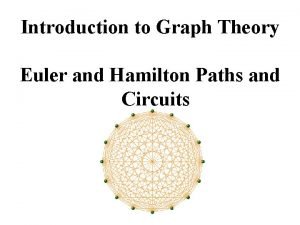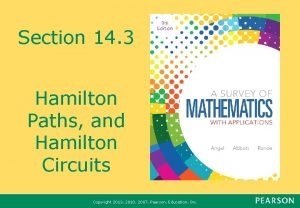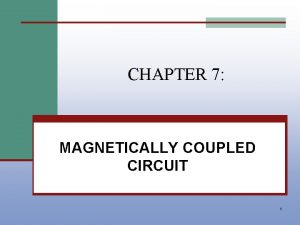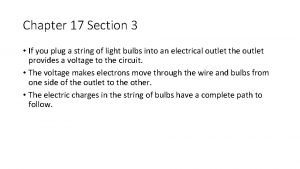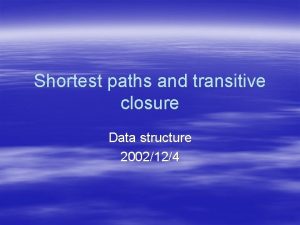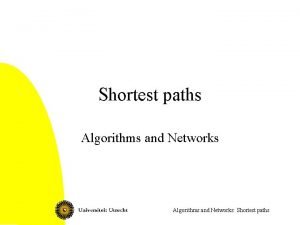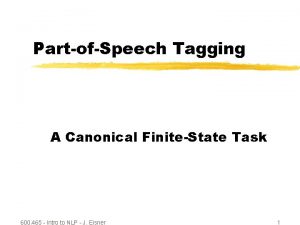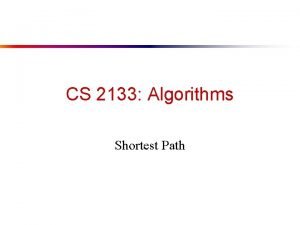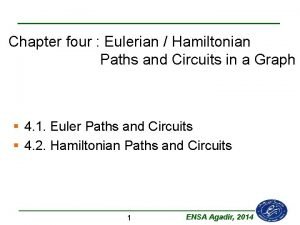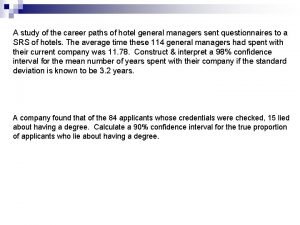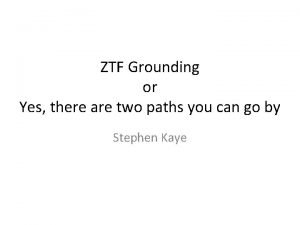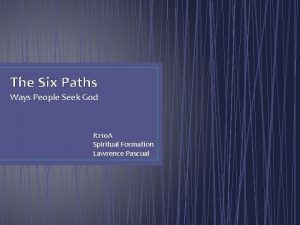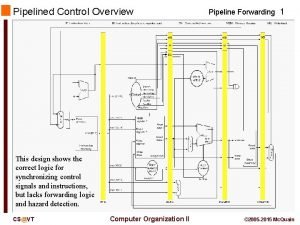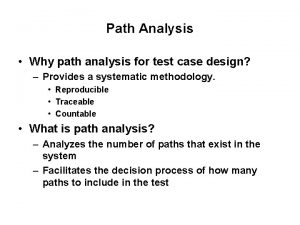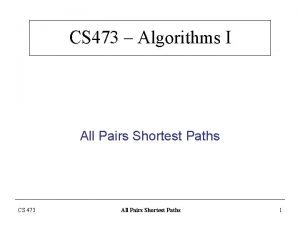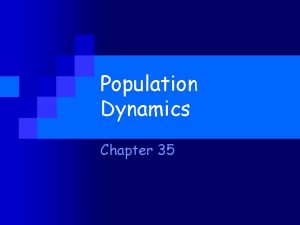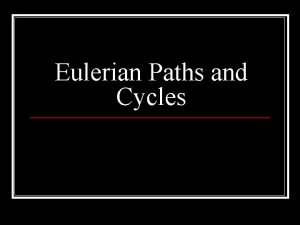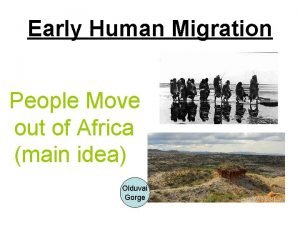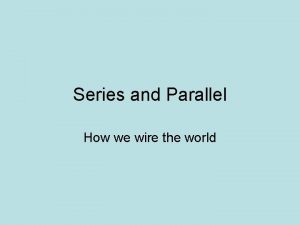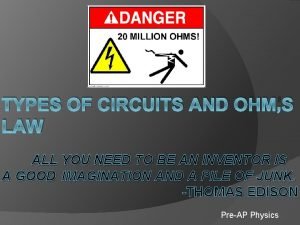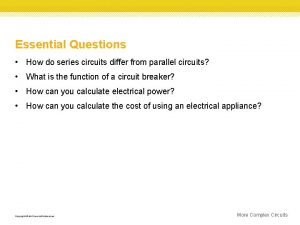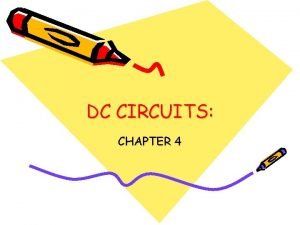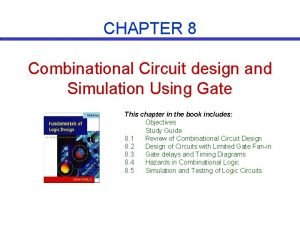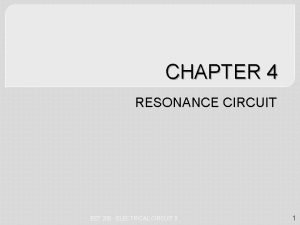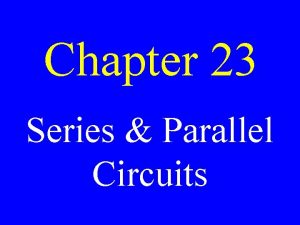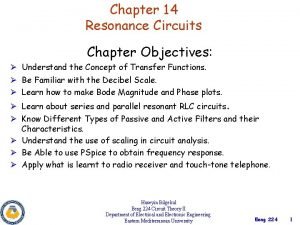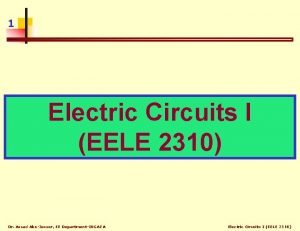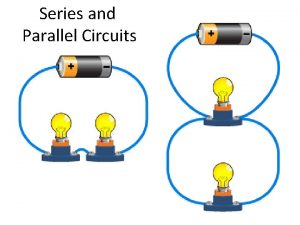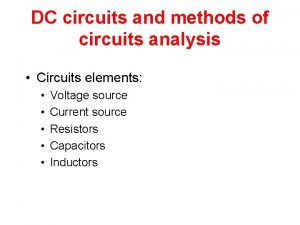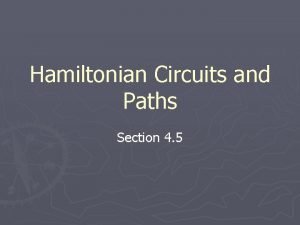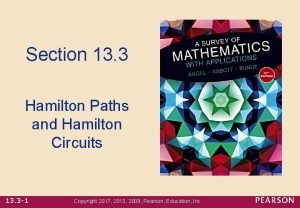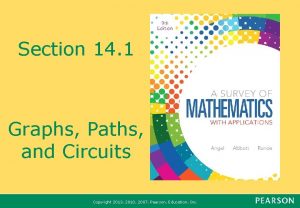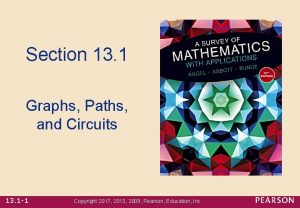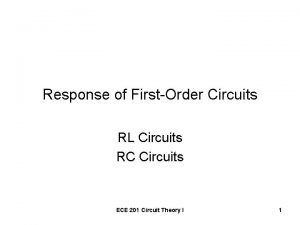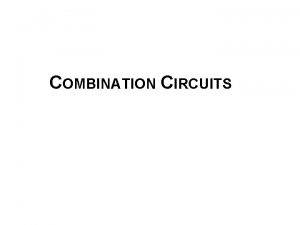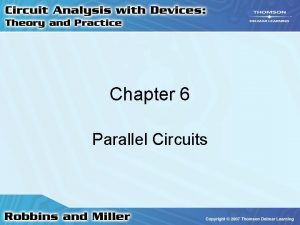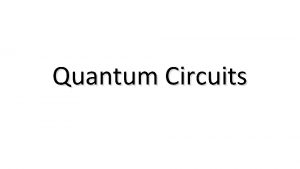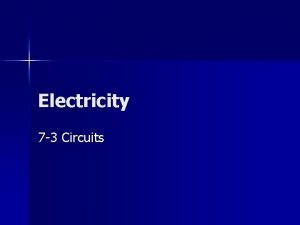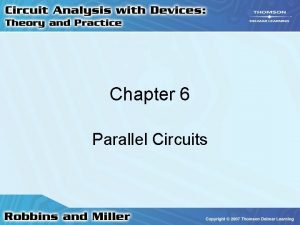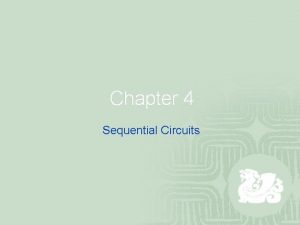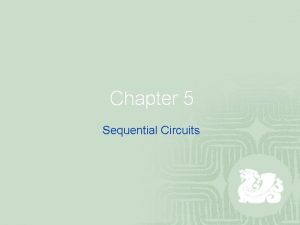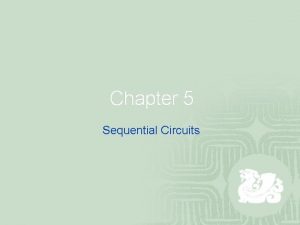Paths and Circuits Lecture 52 Section 11 2
































































- Slides: 64

Paths and Circuits Lecture 52 Section 11. 2 Wed, Apr 26, 2006

The Seven Bridges of Königsberg ¢ In the city of Königsberg, two branches of the Pregel River came together, with an island at their junction.

The Seven Bridges of Königsberg ¢ There were seven bridges crossing the river at various places.

The Seven Bridges of Königsberg ¢ The challenge was to start at one point, cross each bridge exactly once, and return to the starting point. ?

Euler’s Solution ¢ Euler abstracted the bridges as a graph with four vertices and seven edges.

Euler’s Solution ¢ Each vertex represents a land mass and each edge represents a bridge. North Shore Island South Shore Peninsula

Walks and Paths A walk from vertex v to vertex w is a finite alternating sequence of adjacent vertices and edges from v to w: v 0 e 1 v 1 e 2 … en – 1 vn – 1 en vn, where v 0 = v and vn = w. ¢ A path from v to w is a walk that does not repeat any edge. ¢

Walks and Paths A simple path is a path that does not repeat any vertices. ¢ A closed walk is a walk that starts and ends at the same vertex. ¢ A circuit is a closed path. ¢ A simple circuit is a circuit that does not repeat any vertex. ¢

Synopsis walk = from A to B, no restrictions. ¢ path = walk, no repeated edge. ¢ closed = from A to A. ¢ circuit = closed walk. ¢ simple = no repeated vertex. ¢

Euler Circuits An Euler circuit is a circuit that contains every vertex and every edge of the graph. ¢ The problem of the Seven Bridges of Königsberg is to find an Euler circuit. ¢

Connected Graphs A graph is connected if, for every pair of vertices v and w, there is a walk from v to w. ¢ A connected component of a graph is a maximal connected subgraph. ¢

Euler’s Solution Theorem: A graph has an Euler circuit if and only if it is connected and every vertex has even degree. ¢ Thus, an Euler circuit over the Seven Bridges of Königsberg does not exist. ¢

The Two Bridges of Ashland ¢ At Randolph-Macon College, they have been trying to solve the Two Bridges of Ashland problem for decades. ? King’s Dominion I-95 RMC

Proof ¢ Proof ( ): Suppose a graph G has an Euler circuit. l Let v V(G). l Then as we travel the circuit, each time we pass through v, we “use up” two of the edges incident to v. l When we finish the circuit, we have used all the edges incident to v. l

Proof Thus, v had an even number of edges. l Obviously, G must be connected. l

Proof ¢ Proof ( ): Now suppose that G is connected and that every vertex of G has even degree. l Choose a vertex v at which to begin. l deg(v) > 0 since G is connected, so follow one of the edges incident to v. l Let w be the next vertex. l We used one of w’s edges to get there. l

Proof w has even degree, so there is at least one more edge available that we can follow. l This happens at every vertex that we visit. l Thus, the circuit is forced to terminate only when we return to the starting vertex v. l This procedure alone does not necessarily produce an Euler circuit. l

Proof Suppose there are edges that were not used. l Follow the original circuit until a vertex is reached that is incident to one of the unused edges. l Apply the original procedure to produce a circuit that starts and ends at this vertex. l “Splice” it into the original circuit. l

Proof Continue in this way, splicing circuits into the existing circuit, until there are no unused edges remaining. l The result is an Euler circuit. l

Example

Example

Example

Example

Example

Example

Example

Example

Example

Example

Example

Example

Example

Example

Example

Example

Example

Example

Example

Example

Example

Example

Example

Example

Example

Example

Example

Example

Example

Example

Example

Example

Example

Example

Example

Example

Example

Example

Example

Example

Example

Euler Paths Theorem: A graph G has an Euler path from v to w if G is connected, v and w have odd degree, and all other vertices have even degree. ¢ Proof: ¢ Add an edge from v to w. l Then the graph has an Euler circuit. l Remove the new edge from the circuit. l

Hamiltonian Circuits A Hamiltonian circuit is a simple circuit that includes every vertex of the graph. ¢ The Traveling Salesman Problem seeks a Hamiltonian circuit of minimal length. ¢

Hamiltonian Circuits ¢ Theorem: If a graph G has a nontrivial Hamiltonian circuit, then G has a subgraph H such that V(H) = V(G). l H is connected. l |E(H)| = |V(G)|. l deg(v) = 2 for all v V(H). l ¢ These conditions are necessary, but not sufficient.

Hamiltonian Circuits ¢ The following graph does not have a Hamiltonian circuit.
 Networks and graphs circuits paths and graph structures
Networks and graphs circuits paths and graph structures Euler trail
Euler trail American idol
American idol Advantages of parallel circuit over series circuit
Advantages of parallel circuit over series circuit Magnetically coupled circuits lecture notes
Magnetically coupled circuits lecture notes 01:640:244 lecture notes - lecture 15: plat, idah, farad
01:640:244 lecture notes - lecture 15: plat, idah, farad Chapter 17 section 3 circuits answer key
Chapter 17 section 3 circuits answer key Shortest paths and transitive closure in data structure
Shortest paths and transitive closure in data structure Paths trees and flowers
Paths trees and flowers Shortest path linear programming
Shortest path linear programming Difference constraints and shortest paths
Difference constraints and shortest paths Paths start and stop at
Paths start and stop at Hierarchical mobility paths
Hierarchical mobility paths Language r
Language r Single-source shortest paths
Single-source shortest paths Sherry hamby
Sherry hamby Horticulture career paths
Horticulture career paths Single-source shortest paths
Single-source shortest paths Many paths lead to the same destination
Many paths lead to the same destination Single-source shortest paths
Single-source shortest paths Euler paths
Euler paths Dd path graph is called
Dd path graph is called Blue ocean strategy 6 paths framework
Blue ocean strategy 6 paths framework Challenges in career management
Challenges in career management Wave winding parallel paths
Wave winding parallel paths Show me your ways meaning
Show me your ways meaning Dd-paths in software testing
Dd-paths in software testing Seeking the old paths
Seeking the old paths Floyd-warshall演算法
Floyd-warshall演算法 A study of the career paths of hotel general managers
A study of the career paths of hotel general managers Yes there are two paths
Yes there are two paths Paths to god
Paths to god Isaiah 6:16
Isaiah 6:16 Double data hazard
Double data hazard Linearly independent paths
Linearly independent paths Cyclomatic complexity example
Cyclomatic complexity example Theoretical flow time for alternative paths
Theoretical flow time for alternative paths Sssp
Sssp Explain the concept of “the middle way/path”.
Explain the concept of “the middle way/path”. Flow time analysis
Flow time analysis Six paths framework
Six paths framework Tributary load and load path
Tributary load and load path Parabolic paths
Parabolic paths Parasitism
Parasitism Shortest augmenting path
Shortest augmenting path Eulerian paths
Eulerian paths Human migration out of africa
Human migration out of africa Description
Description Pros and cons of parallel and series circuits
Pros and cons of parallel and series circuits Full sectional drawing
Full sectional drawing Describing energy section 2 answers
Describing energy section 2 answers Difference between datagram and virtual circuit
Difference between datagram and virtual circuit Types of circuits and ohm's law ch 7.1 answers
Types of circuits and ohm's law ch 7.1 answers What is an incomplete circuit
What is an incomplete circuit Differences between series and parallel circuits
Differences between series and parallel circuits For protection household circuits contain
For protection household circuits contain Dc
Dc Combinational circuit design and simulation using gates
Combinational circuit design and simulation using gates Series and parallel circuits
Series and parallel circuits Ohms law worksheet
Ohms law worksheet Chapter 23 series and parallel circuits answers
Chapter 23 series and parallel circuits answers Series and parallel circuits
Series and parallel circuits Lesson 8 comparing series and parallel rlc circuits
Lesson 8 comparing series and parallel rlc circuits How to find req in a series circuit
How to find req in a series circuit Electric circuits nilsson
Electric circuits nilsson

